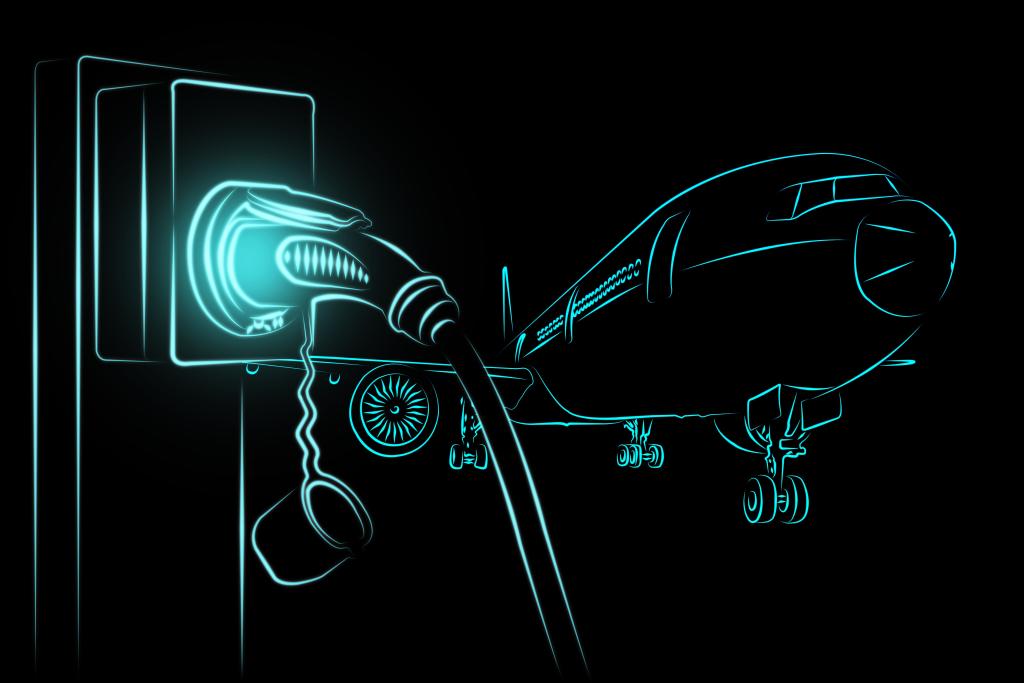Assessment of technical and operational requirements
The first step in determining the feasibility of e-flight must be a technical and operational feasibility assessment.
Not only will an overview of e-flight technology and the necessary prerequisites for its implementation be provided, but the current air traffic network as well as the existing airfield and electrical infrastructure will also be evaluated.
In each assessment, we consider key elements such as runway length, availability of renewable energy, energy storage and different types of chargers. It is also important to consider air traffic network requirements.
All electric aircraft expected to enter the market will have specific range requirements. To ensure viable, safe and efficient operations, distances between airports must be carefully considered.
The possibilities offered by e-flight represent a crucial step towards improving regional connectivity, enabling more frequent and initially less expensive short-haul flights, particularly in regions underserved by traditional air transport.
Electric aircraft can operate from smaller airports, making it easier to establish new routes and improving access to remote and rural areas. This improved connectivity could open up new markets, boost economic growth and promote social inclusion.
The data we collect on technical and operational requirements will enable us to assess the gap between the requirements for the electric aircraft and the current state of the art, and thus define a strategy and roadmap for phased implementation.
Examination of market and economic viability
The next step in building the business case is to shift our focus from the current state to the projected development of electromobility in the coming years.
We examine how factors such as technology, air travel demand, regulations and infrastructure investment are likely to evolve and what impact they might have on the feasibility of e-flight.
Take battery technology as an example – we expect tremendous technological advances in the coming years, leading to longer flight ranges, higher passenger capacity and lower operating costs.
This, in turn, could lead to lower airfares, increase domestic passenger demand and ultimately significantly improve the economics and operational efficiency of e-flight.
In addition, it is important to look at the regulatory context – both global and local – to assess how e-flights are regulated and what impact this might have on the economics of e-flight routes.
Not only do regulations play a critical role in ensuring safety, they also have the potential to facilitate and encourage the transition – both at government and airport level.
The government’s main task in the transition to electronic aviation will be to develop strategies, cooperate internationally to ensure standardization, provide financial support through subsidies, and support research and training.
Airports play a key role in identifying the necessary changes in airspace and operations and implementing policies that support the transition, such as reducing airport charges for sustainable flying or implementing noise reduction policies that favor electric aircraft, for example.
For example, changes to regulations on maintenance, subsidies and penalties for the use of fossil fuels could have a significant impact on making electric flying more economical.
The final step in this phase is to analyze the sustainability impact of electric flight and determine the potential reduction in CO2 emissions.
Collaboration is key
The aviation industry has a huge opportunity to reap the benefits of e-flight. The technology is developing rapidly and will play a key role in improving regional connectivity and more sustainable aviation. Some countries are already working to put it into practice.
But there is undoubtedly still a lot of work to be done when it comes to commercial viability if we are to achieve greater global adoption. The key to driving this development is to assess the areas described above, as well as to develop a concrete vision for the e-aircraft.
As an industry, we need to have realistic goals and ambitions – and a clear roadmap for implementation.
At the same time, close cooperation between the various stakeholders – manufacturers, airlines, financiers, airport operators, regulators and energy companies – is crucial.
This applies not only to policy and regulation, but also to the financing of aircraft and infrastructure.
If we want to secure a sustainable future for our industry, we must manage the transition to electromobility together and as part of broader sustainability strategies – it cannot be managed in isolation.

